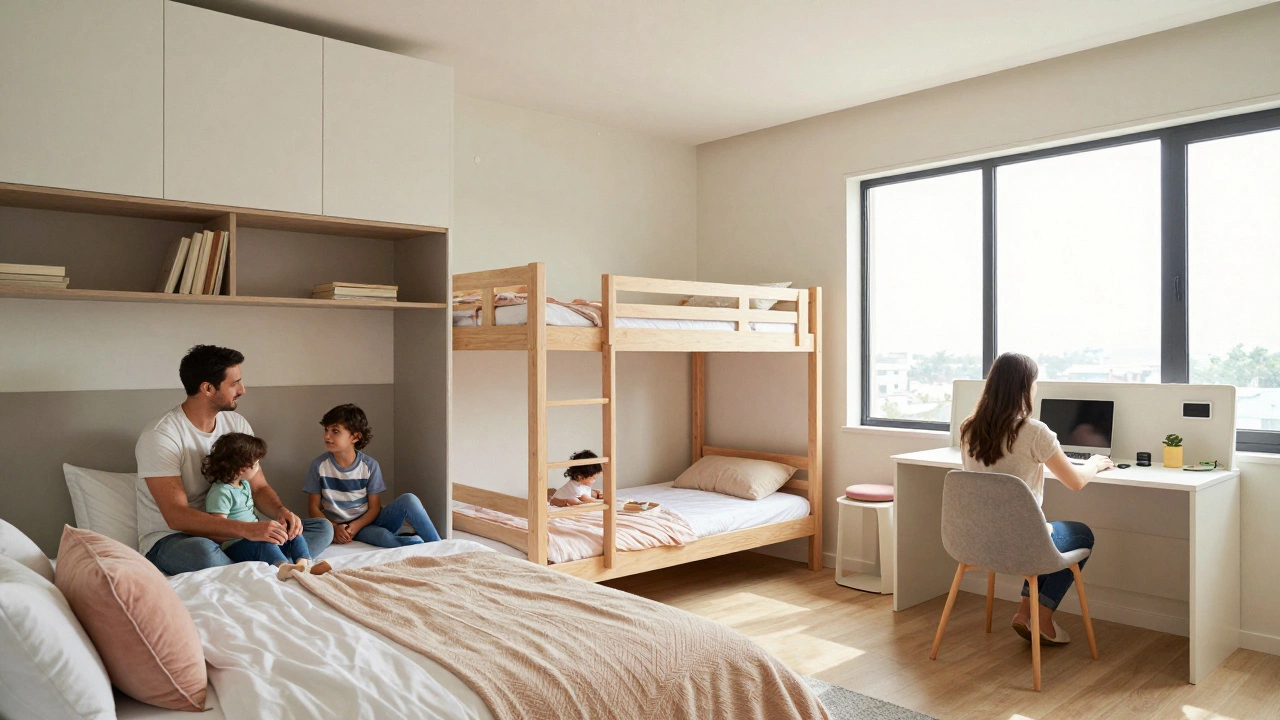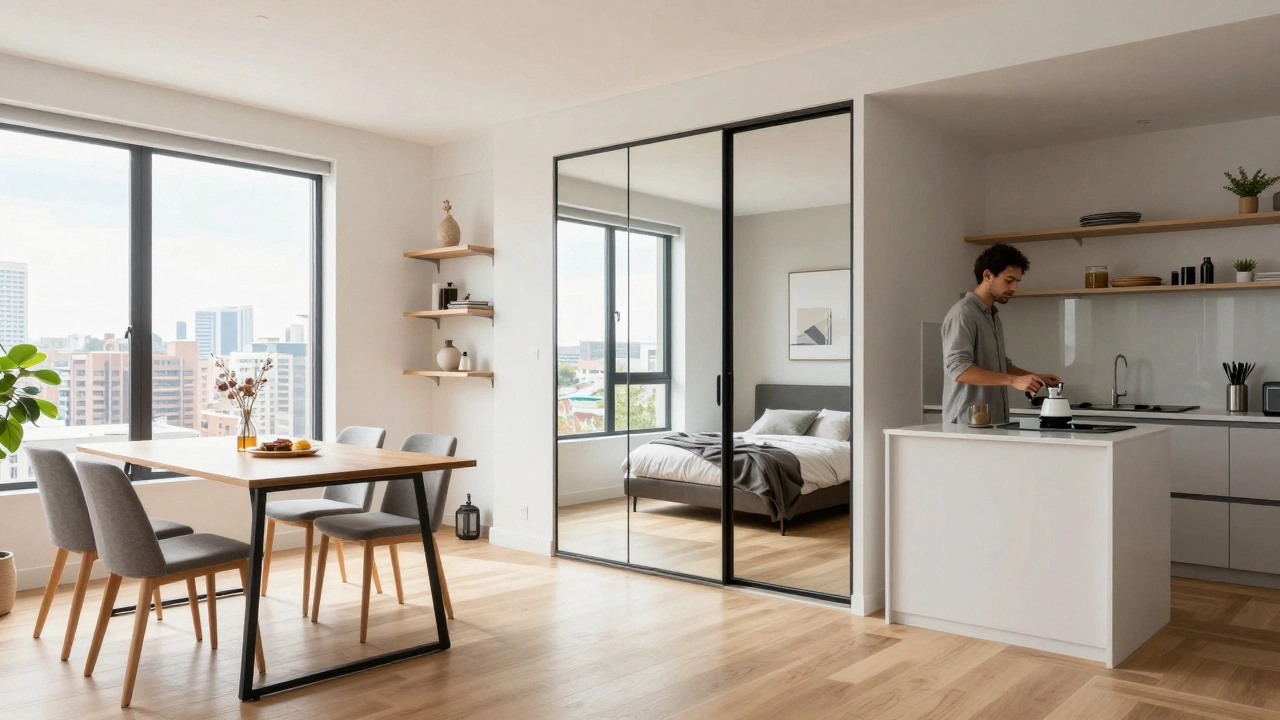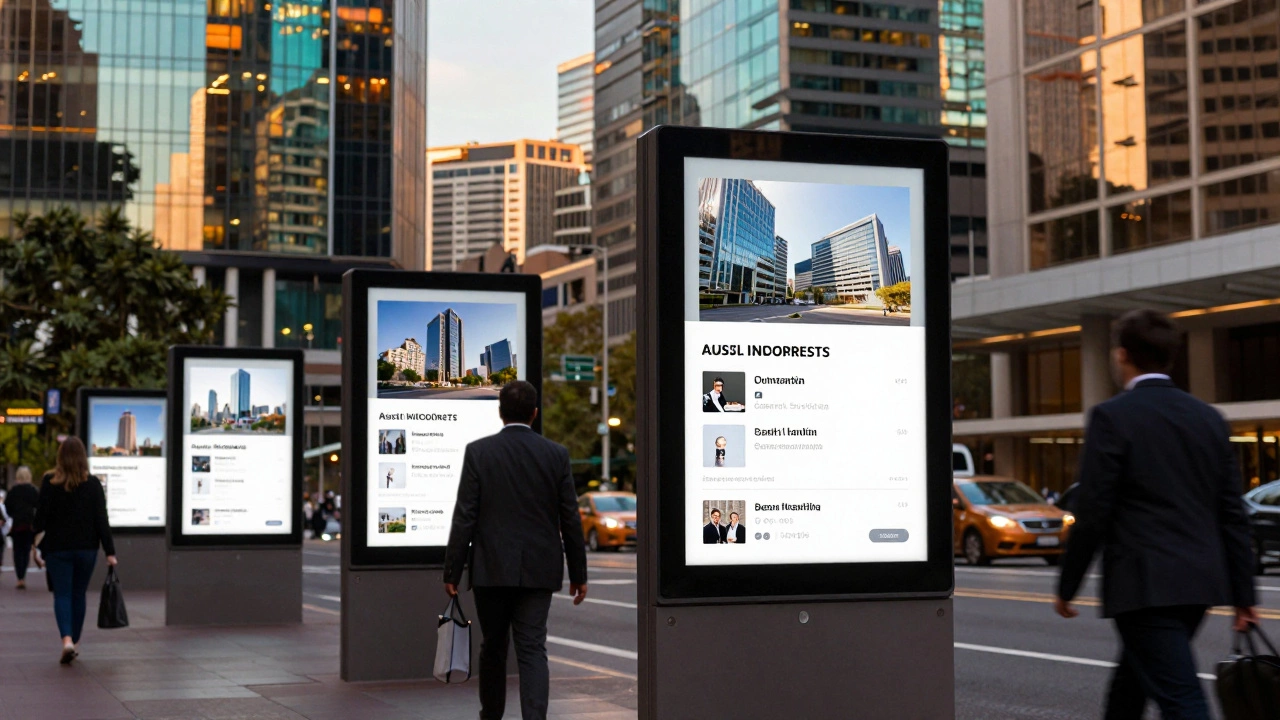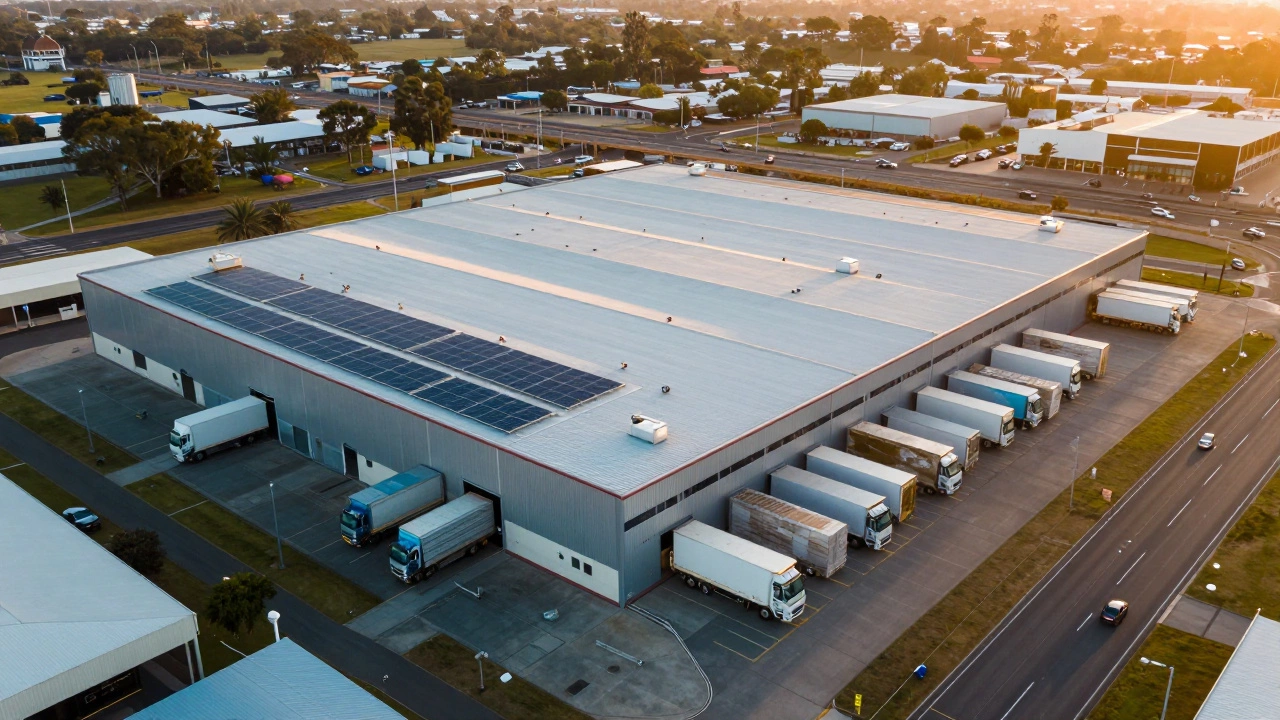Ever notice the letters 'WD' popping up when scrolling through 2BHK apartment listings? You’re not alone. I remember the first time I saw it—I kept guessing everything from 'window dressing' to 'wardrobe.' Turns out, WD stands for 'Washer Dryer.' Simple, but it packs a punch for daily life.
Think about all those Sunday laundry runs. If you’ve lived anywhere without a washer and dryer, you know it’s a chore: lugging clothes around, waiting for a free machine, dealing with lost socks—just the worst. That’s why seeing WD in a listing is like spotting a hidden gem, especially if you’re settling down with family, roommates, or, in my case, a dog who loves muddy walks.
- Understanding the WD Label
- Why WD Matters in 2BHK Apartments
- Types of WD Units: Stacked, In-Unit, Common Area
- How WD Affects Your Rent and Lifestyle
- Spotting Genuine WD Listings
- Practical Tips for Choosing the Right 2BHK with WD
Understanding the WD Label
When you see "WD" in an apartment listing—especially for a 2BHK apartment—it usually means the place comes with a washer and dryer setup. That’s a big deal. No more trips downstairs or across the street just to wash your socks and bedsheets. WD might mean the units are inside the apartment itself, or sometimes they’re right down the hall or in a common room.
Here’s how property managers use the "WD" label:
- In-unit WD: The ultimate win. This means the washer and dryer are right inside your apartment, behind a door or tucked in a closet.
- WD Connections: Sometimes, a listing will say it has "connections" for washer and dryer—but not the actual machines. You’d have to bring or buy your own appliances.
- Community WD: Shared laundry facilities in the building or complex. It usually costs extra per load and means you’ll have to lug laundry back and forth.
Have a look at typical WD features you might see in apartment listings:
| Label | What It Means | Who It’s For |
|---|---|---|
| In-unit WD | Private washer & dryer right inside apartment | Anyone valuing privacy & convenience |
| WD Hookups | Plumbing/electrical ready, but no machines | People who own or want to pick appliances |
| On-site WD | Shared laundry in building or on property | Budget hunters, not picky about sharing |
Pro tip: When a listing just says "WD included," ask where exactly. Is it in your apartment, shared down the hallway, or something else? That small detail can make a huge difference in your daily routine and expenses.
Why WD Matters in 2BHK Apartments
If you think a washer dryer is just a nice-to-have, wait until you experience the freedom of doing laundry at home. In a 2BHK apartment, with possibly more people or even messy pets around, laundry piles up fast. Getting a WD (Washer Dryer) unit right inside your own four walls is a total game changer.
For starters, you save time. According to a survey by Apartment List in 2023, renters spend about two hours a week just doing laundry outside their apartments. That’s time you could use for anything else—like catching up on Netflix or chasing your dog around.
Hygiene is also a biggie, especially post-pandemic. Shared laundry rooms in apartment complexes can be hit-or-miss, with some folks not following basic cleanliness or misplacing your stuff. Having your own WD means fresher clothes, less hassle, and a lot less awkward encounters in common laundry rooms.
“Having an in-unit washer dryer is now the top priority for renters searching for apartments, especially in the 2BHK category,” says Ankit Rastogi, CEO of Stanza Living, in an interview with Financial Express (June 2024).
WDs also impact your wallet in sneakier ways. On-site laundromats often require coin payments, which can cost as much as ₹100 per load—multiply that across a month, and you’re spending a few thousand rupees just to wear clean clothes. When you’ve got your own WD, you simply pay for your usual water and electricity use.
Plus, for families with kids, or pet owners (like me, with Rocky’s constantly muddy towels), quick laundry access isn’t just a perk—it’s almost a necessity. You don’t risk clothes piling up, and you avoid emergency runs to find a free washer just because someone spilled juice or rolled in the mud.
Types of WD Units: Stacked, In-Unit, Common Area
Not all WD setups in 2BHK apartments are created equal. When you spot "WD" in a listing, it could mean a few different things, and each has its own impact on your daily routine.
- Stacked Units: These are literally stacked on top of each other—a washer on the bottom, dryer on top. You’ll find these squeezed into closets, nooks, or even bathrooms. They’re perfect if you’re short on space, and most new builds seem to go this way. Brands like LG and Samsung lead the pack, with machines taking up less than three square feet. Super convenient for smaller 2BHK apartments.
- In-Unit WD: This is the real jackpot—both the washer and dryer are in your actual apartment. No hallways, no elevator rides, just pop your muddy jeans in after walking Rocky and chill out while they spin. According to a survey by Apartment List in 2024, more than 65% of renters said an in-unit WD was a dealbreaker for them. You’ll usually find these in the kitchen or a dedicated laundry closet.
- Common Area WD: Here’s where things get a bit less exciting. The machines aren’t in your apartment, but somewhere in the building—like the basement, a shared laundry room on each floor, or sometimes tucked into the clubhouse area. Fine if you don’t mind sharing, but be ready for the dash downstairs when your timer goes off. Most buildings limit machines to two to four units per floor, so peak hours get crowded fast.
Wondering how these options stack up? Check out this quick-table:
| WD Type | Where You’ll Find It | Pros | Cons |
|---|---|---|---|
| Stacked | Closets, kitchens, bathrooms | Space-saving, private | Smaller load size, can be noisy |
| In-Unit | Dedicated laundry area, kitchen, closet | Ultimate convenience, no lugging laundry | Can raise rent, uses your utilities |
| Common Area | Basement, shared laundry rooms, clubhouse | No maintenance hassle, sometimes cheaper rent | Less privacy, possible wait times |
When apartment hunting, always ask which setup you’re getting. "WD" on a listing can sometimes mean just common access—not the in-unit deal you hoped for. Don’t be shy: confirm this before you sign anything, or you’ll be lugging laundry farther than you bargained for.

How WD Affects Your Rent and Lifestyle
Adding a washer dryer (WD) to your 2BHK apartment isn’t just a nice-to-have—it actually changes the whole vibe of where you live, as well as your monthly expenses. First off, let’s get one thing out of the way: apartments with in-unit WD almost always cost more. Rent jumps anywhere from ₹1,500 to ₹5,000 extra per month in Indian cities like Bangalore, Mumbai, or Hyderabad. In the US, that extra rent can sit between $40 and $120 per month, depending on the neighborhood and how new the machines are.
If you’re tight on budget, you’ll have to think about what matters more: convenience or cost savings. Not having to drag your laundry down the street on a rainy day is a big deal—just ask anyone who’s scrambled for coins at a laundromat when they’re already running late. According to a survey published in the National Apartment Association report:
| Feature | Average Rent Increase (INR/month) | Time Saved (per week) |
|---|---|---|
| In-unit WD | 2,200 | 1.5 hours |
| Shared WD (same floor) | 800 | 0.75 hour |
| No WD | 0 | 0 |
That’s not just spare change—it’s a real dent (or boost) in your finances over a year. Plus, if you work odd hours or have pets (my dog Rocky is a mud-magnet), having WD in the apartment saves you all sorts of hassles.
Let’s hear it from someone who sees it all the time.
"Washer-dryer units are the #1 feature tenants ask for now—sometimes it's even more important than a great view or a big balcony," says Priya Mehra, a real estate agent in Gurgaon.
- Onsite WD can boost your social life—no need to block hours for laundry runs.
- Forget about wasting time or getting annoyed at the guy who leaves clothes in the machine for two hours.
- If you live with family or roommates, it stops all the household arguments about laundry schedules and hygiene.
If you go for the cheaper, no WD option, be ready for more planning, shared laundry rooms, and sometimes higher stress. So, ask yourself: is an extra hour each week, more comfort, and less mess worth those extra bucks to you?
Spotting Genuine WD Listings
No one wants to move in and find out the 'WD' promised in the ad is just a dusty hookup or a shared coin laundry in the basement. Sadly, not every listing that says 'Washer Dryer' means you get the real thing inside your 2BHK apartment.
Here’s what you need to look for so you don’t get tricked:
- Check for 'In-unit' or 'Private WD' in the Description: If a listing just says WD, ask if it’s actually inside the apartment or somewhere else in the building. The real game-changer is an in-unit WD, not a shared one down the hall.
- Look at the Photos Carefully: Listings with genuine WD setups often show the machines clearly in the kitchen, bathroom, closet, or pantry. If you only see a shot of a laundry room with 10 machines, that’s probably a shared facility.
- Ask About Applicability: Some buildings only have WD hookups, not actual machines. A hookup means you’ll need to buy (and possibly install) your own washer and dryer, which can get pricey and annoying with landlord rules.
- Double-check Lease Terms: Scour the lease for any line about WD. If it’s included, the lease should mention the machines and any maintenance responsibility. If it’s missing, ask before signing—don’t get stuck on assumptions.
One time, I showed up thinking I had scored a great 2BHK with WD. Turns out, it was just hookups behind a closet. If you’re searching for a place with a WD meaning an actual washer and dryer, always double-check before getting your hopes up.
Pro tip: If you’re visiting, peek into closets, kitchens, or utility corners. A legit in-unit WD sticks out—no one’s hiding them for fun. Don’t be shy to ask the landlord to show you the machines working, even if it feels awkward. Saves you from heaps of laundry headaches later.
Practical Tips for Choosing the Right 2BHK with WD
Laundry convenience sounds nice, but picking the right 2BHK apartment with WD isn’t as simple as just spotting those letters. There are a few smart moves that can make your hunt much easier, and you’ll thank yourself later when moving day comes around.
- Check the Location of the WD: Some 2BHKs put the washer dryer in a closet, others stick it in the hallway or even the bathroom. Ask for photos or do a virtual tour. If you don’t like hauling laundry through the whole flat, look for a layout where the WD is near bedrooms.
- Inspect the Machine Type: Front-loaders save water and energy; top-loaders are often faster but can use more water. Visit the unit if you can—old machines might be noisy or smell musty. If it looks ancient, ask if a replacement is possible.
- Look for Ventilation: If the WD is in a tight spot with no vent, it can get humid and even lead to mold. Apartments built after 2015 usually have better setups, but always double-check in person.
- Compare Appliance Brands: Brands actually matter here. A Samsung or LG WD usually runs quieter and lasts longer than an off-brand. Renters have reported up to 30% fewer maintenance calls with major brands, based on a survey by RentCafe in 2023.
- Understand Maintenance Terms: Is fixing or replacing the WD your landlord’s job? Or will you get stuck with the bill? Make sure it’s spelled out in the agreement, especially for furnished flats.
- Test Water Pressure: Sounds boring but makes real difference. Slow-filling washers mean longer laundry cycles. Run the taps when you visit, and ask to test the WD if the current tenant allows it.
If you love crunching numbers, here’s a quick comparison with and without WD in a 2BHK. Stats come from Magicbricks’ 2024 rental survey in major Indian cities:
| 2BHK with WD | 2BHK without WD | |
|---|---|---|
| Avg. monthly rent (INR) | 30,500 | 28,000 |
| Avg. time spent on laundry (per week) | 3 hrs | 6 hrs |
| Annual laundry savings (INR) | 10,800 | 0 |
The numbers don’t lie: spending a bit more on rent for that WD can pay for itself in saved time and less hassle. If you have pets like Rocky (trust me, fur-filled laundry is a thing), in-unit laundry is a lifesaver.
The golden rule—never assume every WD means in-unit. Sometimes, it’s a shared machine on the floor or in the basement. Always ask for details before you sign. That way, there are no nasty surprises after moving in.





